Navigating the labyrinth of strange and confusing rules: A Deep Dive into UK Knife Laws
Embarking on a journey through the intricate maze of UK knife laws can be like trying to figure out a complex code. What blades/knives are permitted, which ones are banned, and what’s the deal with disguised knives and gravity knives? Fear not, as we break down the nuances of UK knife regulations, and hopefully make this all make a little more sense to you.
Banned Blades: A Gallery of No-Go’s
In the realm of UK knife laws, there exists a list of prohibited blades that demands attention. This is the main and fairly extensive list of knives you’re just full on not allowed to have, either at home, or in public. You can find the full list on the Government Website.
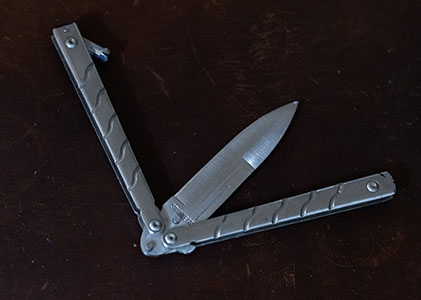
Butterfly Knives (Balisongs): Flashy and mesmerizing, and I’m sure we all want one. Sadly, these are definitely a no-go. They’re knives with two handles that rotate around the blade. Often featured in films due to their association with skill. While we’re not really sure why they’re banned, they are, so steer clear!
Push Daggers: Short, designed for stabbing, and deemed too dangerous for public possession, push daggers are unequivocally banned under UK knife laws. With some knives, we don’t understand the reason, but with these we kind of get it. They’re easy to identify, usually just a handle with a blade that protrudes forwards between the fingers, similar to knuckle dusters (also banned). They’re very limited in function beyond being used in aggression so for this reason they’re banned in the UK.
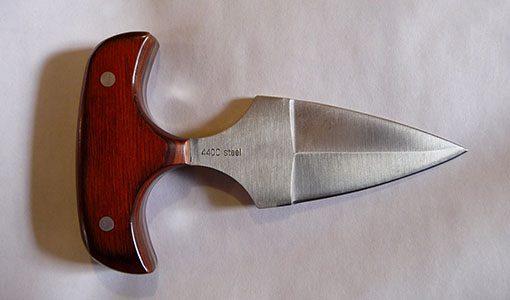
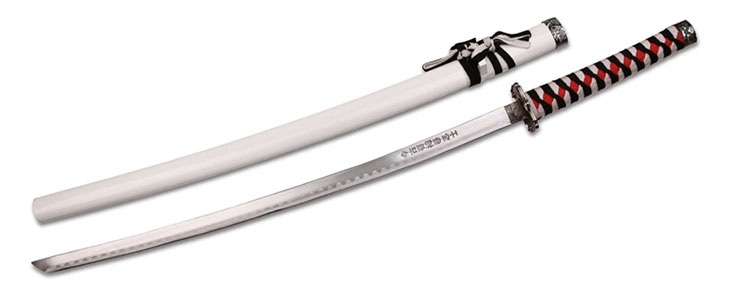
Curved Swords Over 50cm (unless handmade): While a traditionally handcrafted curved sword may carry a touch of romance, commercially produced ones exceeding 50cm are illegal in the UK. With fairly good reason too, we see a lot of cheap knock off curved swords in the US, and we much prefer the genuine article, traditionally hand made curved swords often prized by martial artists. The real deal is often expensive too, but they are worth the expensive for a piece of art. You can find some over on our system site, Knife Warehouse if you’re interested! Stick to the UK Knife laws, and you’ll be fine!
OTF (Out The Front) and Flick Knives: With their futuristic blade deployment mechanism, OTF knives are strictly prohibited in the UK. These include knives with switches that when pushed forward deploys the knife automatically out of the front of the handle. Some models also retract the blade by pushing the switch in the other direction. Other more standard flick knives are just knives with a button that deploys the blade. In recent legislation changes, spring assisted knives, which are partially manual and partially automatic were banned too.
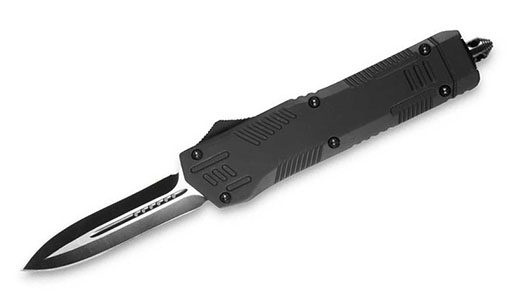
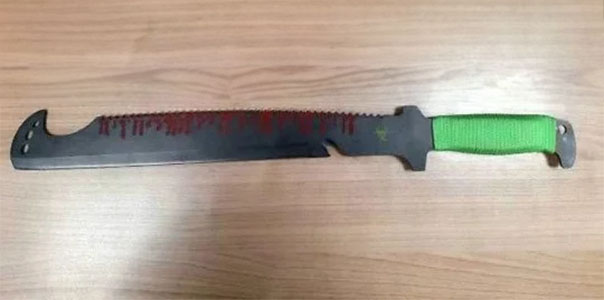
Zombie Knives: Despite the name, these knives have nothing to do with battling the undead. Typically large and ‘excessive’, zombie knives are illegal. The government has struggled to define what exactly a zombie knife is and more legislation on these is coming soon to UK knife laws. In the meantime though, and for our purposes any knives that have a blade, serrations and words of pictures inciting or involving violence are considered zombie knives and are banned.
Disguised Knives: Concealed within innocuous objects, disguised knives are expressly banned due to their potential for covert carry and use. Examples include knives disguised as hairbrushes, or belt buckles fall into this category.
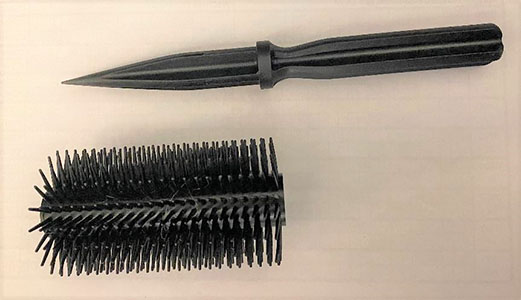

Gravity Knives: With a mechanism that allows the blade to fall freely, gravity knives fall under the prohibited category of UK knife laws. Sometimes incorrectly defined by border force on import to the UK, these are knives that have a switch or button that when pressed and the blade is pointed toward the ground the blade deploys. This is not the same as being able to wildly flick a knife open, these knives just drop into place.
Decoding the 3-Inch Non-Locking Rule: The Everyday Carry Conundrum
Navigating the realm of everyday carry, the UK permits the public to carry non-locking folding knives with blades under 3 inches in public spaces. This rule strikes a delicate balance between personal freedom and public safety, as non-locking knives lack a mechanism to firmly hold the blade in place when open. We are limited in what we can carry with us in the UK, and it is a shame, but we’re grateful for what we’re allowed to carry.
Please keep in mind, these knives are measured by the cutting edge, meaning the actual cutting edge must be less than three inches, the steel can be slightly longer, but not everyone realizes this. In any case, to be safe and to avoid unwanted confrontation we recommend knives where the entire blade falls below the three inch mark.
Keep in mind that no matter how ‘legal’ these knives may be, there are places where they’re not. Schools, prisons and so on. Make sure you read up on UK knife laws before taking your knife outside! Further, just because it’s legal, doesn’t mean that you can go waving it around. Use sensibly and with caution to enhance you and other peoples day to day lives.
Carry with Caution: What’s Allowed Beyond 3 Inches?
While the 3-inch non-locking UK knife laws govern everyday carry, understanding generally accepted knives for public spaces is crucial. Common folding pocket knives that comply with size and locking regulations are typically permissible.
However, for those requiring knives outside these standard legal limits, having a genuine reason becomes paramount. Acceptable reasons include:
Work-related Purposes: Carrying knives for professional reasons, like chefs transporting their tools or tradespeople with utility knives, aligns with legal boundaries. Just be aware that if questioned, you will need to clearly explain the reason for it being in your possession. Once your use for it is completed, it must be returned to your home or somewhere you have legal permission to store it. Just nipping to the shop on the way home from work could get you into trouble if you still have it in your pocket! Always be as safe, and careful, as possible.
Religious or Cultural Reasons: Individuals may carry knives for religious or cultural practices, provided they can articulate the significance of the blade when questioned.
Sporting Activities: En route to a sports event or activity involving knives, such as camping or fishing? As long as it’s part of a legitimate sporting pursuit, legality is on your side.
Expanding Your Carry Horizons: Unveiling Genuine Reasons
For occasions demanding larger or locking knives, having a genuine reason is your golden ticket. Authorities recognize that specific activities necessitate specialized tools, so being prepared to articulate the necessity of your chosen blade is crucial. If in doubt, leave it at home!
Conclusion: Navigating the Blade’s Edge with Wisdom and Awareness
Understanding UK knife laws requires diligence, but it need not be an unsolvable puzzle. Adhering to the 3-inch non-locking rule for everyday carry, acquainting yourself with banned and accepted blades, and, when necessary, providing a genuine reason for deviating from the norm are key. By doing so, you ensure that your journey through the world of knives remains not only lawful but also uneventful. Stay sharp, stay safe, and may your exploration of blades be both informed and enjoyable!
Need storage for your knives at home?
Why not try one of the latest products from Holme & Hadfield. If they’re not with you out and about, why not keep them pristine with a storage and display case!
